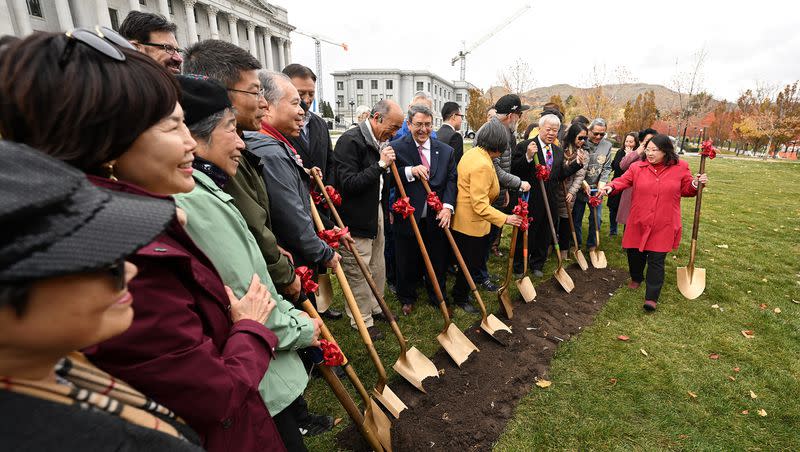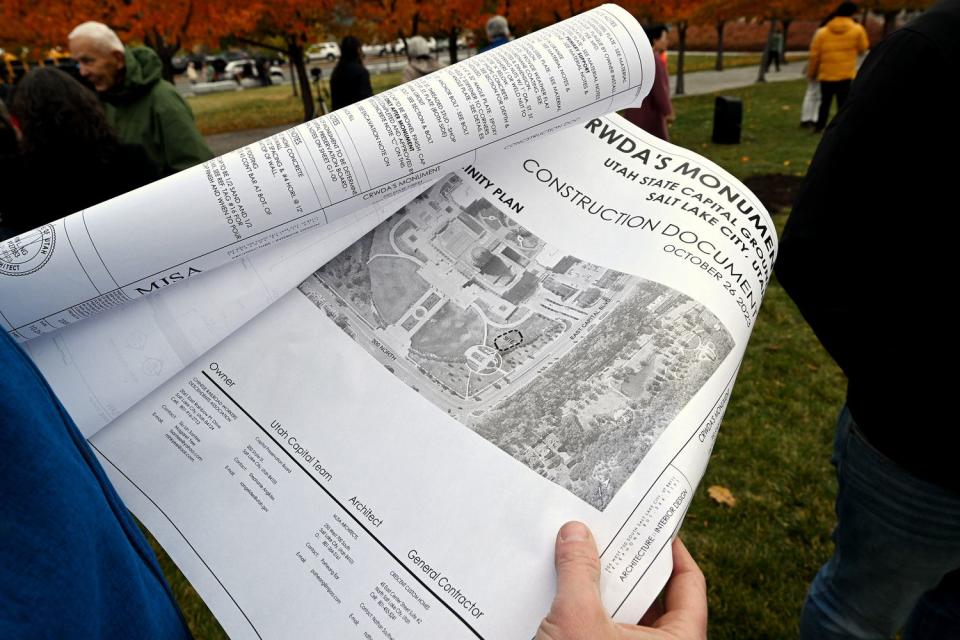New monument honoring Chinese railroad workers to be added to Utah Capitol

Sen. Karen Kwan, D-Taylorsville, knows the story of one of her ancestors who worked on the transcontinental railroad largely through oral histories passed down through her family over time; however, that's about all she knows about him.
She doesn't know his name or many other details about his life because he was one of the vast majority of railroad workers whose names were never recorded in the 1860s.
"The railroads didn't take names of Chinese railroad workers — not all of them," she said. "It's the oral histories that I learned from."
This is the reality that many descendants of the Chinese transcontinental railroad workers face. It's estimated that at least 12,000 Chinese workers helped build the transcontinental railroad, but there's only documentation of about 900 foremen because their names were written on payslips.
The fact that these workers' contributions were largely forgotten for over a century helped spark the creation of the Chinese Railroad Workers Descendants Association. It's also the basis behind a new monument that the association commissioned to honor the workers, which is coming to the Utah Capitol soon.
Dozens gathered on the Capitol lawn Tuesday afternoon to ceremonially break ground on the project. The monument is expected to be completed by the end of this year or early next year, ahead of an official event in May 2024 for the 155th anniversary of the transcontinental railroad's completion.
"It's very important to honor our ancestors, especially because their stories have been lost," Kwan said. "Their stories have been ignored or changed in some way. It's very much our goal to bring forward their stories and educate others about the work that they've done."
The monument itself won't be very large, standing about 5 feet tall and 4 feet wide, but it's filled with symbolism that pays tribute to the workers who started in California and completed their work in Utah, says Porheang Ear, an associate architect with MJSA Architects, who designed it.

His design mashes granite and sandstone to symbolize the workers' journey through the Sierra Mountains and Nevada and into Utah's West Desert. An outline of Utah made from weathered steel reinforces stone and stainless-steel elements that represent the workers' "unwavering spirit," according to association officials.
The organization adds that there are six materials and six layers of material merged together because the number six was chosen to serve as a "good luck number." The monument also serves as a way to recognize the many Asian pioneers who settled in Utah after the completion of the railroad in 1869.

The project will feature a plaque to recognize other groups of railroad workers who came together to build the important line, too. Native Americans, immigrants, former slaves and Civil War veterans all played instrumental roles in building the line, while members of The Church of Jesus Christ of Latter-day Saints helped build the final railroad grade at the time.
"We wanted something to be symbolic, something that's very representative of the event that took place," Ear said. "It's leaving a lasting legacy in a way. It's celebrating not just us, but the whole diversity of America."
Once installed in the coming weeks or months, the monument will be quickly joined by another art piece that seeks to tell a more complete story of the transcontinental railroad in Utah.
Tuesday's ceremony took place weeks after a 43-foot-tall golden spike was temporarily displayed outside of the Utah Capitol before it's installed in Brigham City next year. The spike features many of the stories behind the historic achievement, including a nod to the many Chinese workers whose stories were lost in history.
Kwan is optimistic that these types of art pieces will help visitors think not just about her ancestor and the thousands of nameless Chinese workers, but everyone who worked on the transcontinental railroad. Combined, the projects help illustrate how a diverse group of people came together to build something that changed the country forever.
"What I hope that they from the monument is a curiosity to learn more. There are so many stories — amazing stories — of these workers," she said. "The stories of their hard work (and) their sacrifice should and has to be continually honored. What a shame it would be to lose those stories again."

